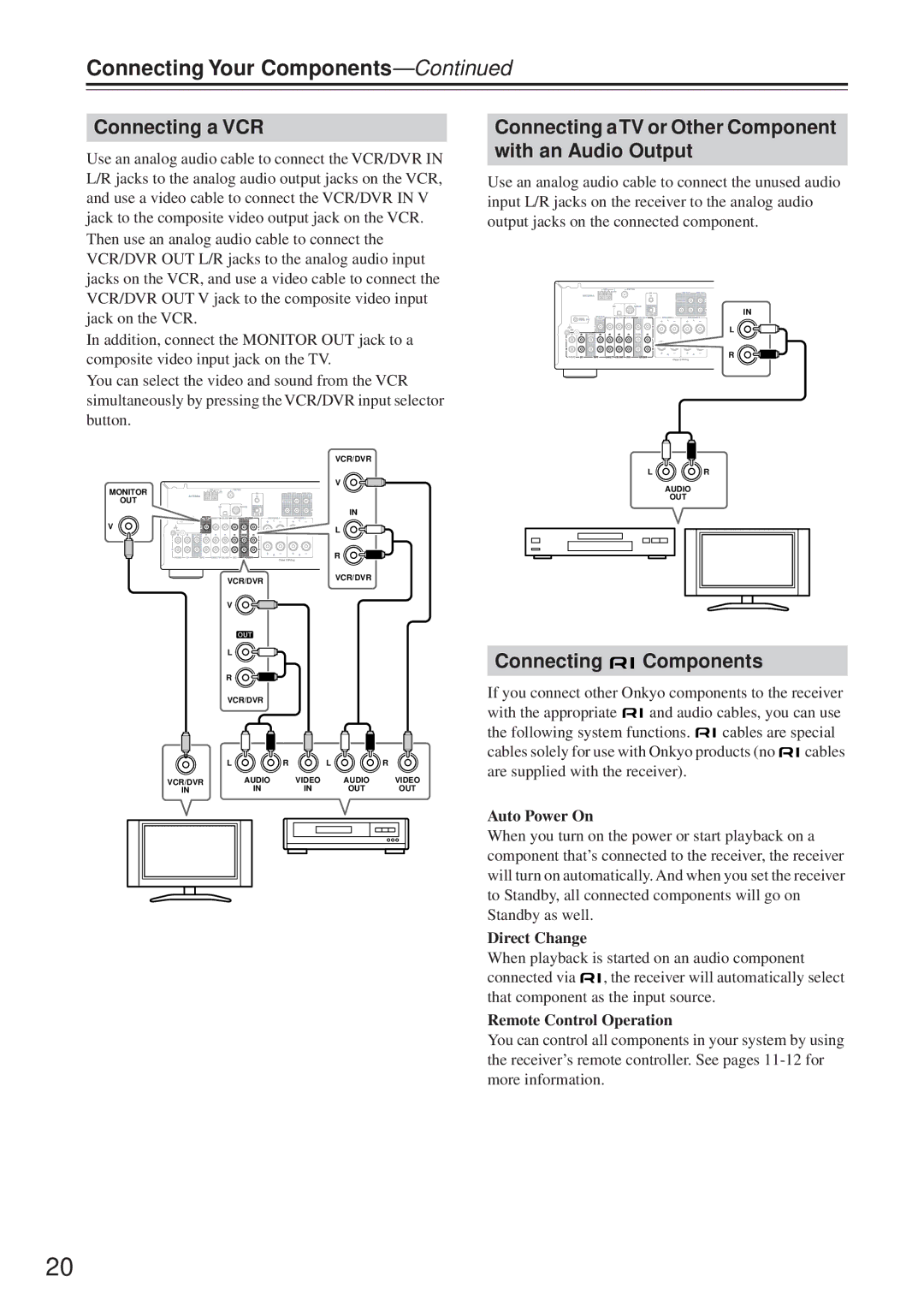
Connecting Your Components—Continued
Connecting a VCR
Use an analog audio cable to connect the VCR/DVR IN L/R jacks to the analog audio output jacks on the VCR, and use a video cable to connect the VCR/DVR IN V jack to the composite video output jack on the VCR. Then use an analog audio cable to connect the VCR/DVR OUT L/R jacks to the analog audio input jacks on the VCR, and use a video cable to connect the VCR/DVR OUT V jack to the composite video input jack on the VCR.
In addition, connect the MONITOR OUT jack to a composite video input jack on the TV.
You can select the video and sound from the VCR simultaneously by pressing the VCR/DVR input selector button.
VCR/DVR
V
MONITOR
OUT
IN
V | L |
|
R |
VCR/DVR | VCR/DVR |
| |
V |
|
L
R![]()
![]()
![]()
VCR/DVR
L | R |
| L | R |
VCR/DVR | AUDIO | VIDEO | AUDIO | VIDEO |
IN | IN | IN | OUT | OUT |
Connecting aTV or Other Component with an Audio Output
Use an analog audio cable to connect the unused audio input L/R jacks on the receiver to the analog audio output jacks on the connected component.
IN
L
R |
L ![]()
![]() R
R
AUDIO
OUT
Connecting 
 Components
Components
If you connect other Onkyo components to the receiver
with the appropriate![]() and audio cables, you can use
and audio cables, you can use
the following system functions. ![]()
![]() cables are special
cables are special
cables solely for use with Onkyo products (no ![]()
![]() cables are supplied with the receiver).
cables are supplied with the receiver).
Auto Power On
When you turn on the power or start playback on a component that’s connected to the receiver, the receiver will turn on automatically. And when you set the receiver to Standby, all connected components will go on Standby as well.
Direct Change
When playback is started on an audio component
connected via![]() , the receiver will automatically select that component as the input source.
, the receiver will automatically select that component as the input source.
Remote Control Operation
You can control all components in your system by using the receiver’s remote controller. See pages
20
